Thales has announced the order of its 100th CAPTAS variable depth sonar system, marking what the company describes as a major milestone in its long-running role as a leader in anti-submarine warfare (ASW) technology.
Developed through more than three decades of collaboration with the British, French and Italian navies, the CAPTAS range now equips 17 different ship classes across 17 navies worldwide, including vessels ranging from corvettes under 1,000 tonnes to full-scale frigates and destroyers.
The CAPTAS family, short for Combined Active-Passive Towed Array Sonar, is designed to deliver long-range, 360-degree underwater detection and tracking even in complex acoustic environments. According to Thales, this capability gives naval forces critical early warning and tactical advantage beneath the surface.
The company said the system’s success lies in its modularity and ability to integrate with diverse naval platforms, establishing CAPTAS as a reference system for NATO and allied navies seeking advanced ASW capability.
Thales added that the sonar’s evolution continues to be driven by artificial intelligence, multi-sensor data fusion, and operational feedback from users.
Sébastien Guérémy, Thales Vice-President for underwater warfare activities, said the milestone reflects the company’s enduring partnership with allied maritime forces. “As a result of long-standing cooperation with more than 50 navies worldwide, our deep understanding of their needs makes the CAPTAS system an essential choice for current and future anti-submarine missions.”


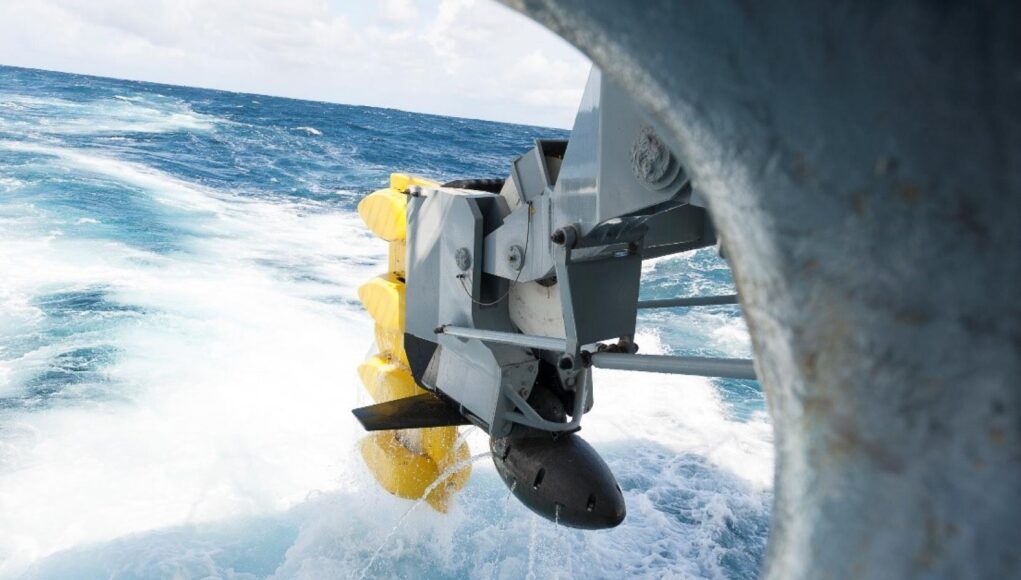
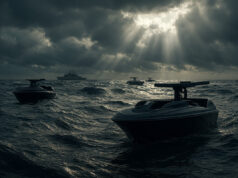
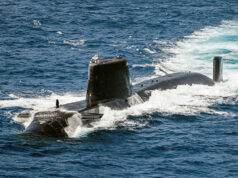

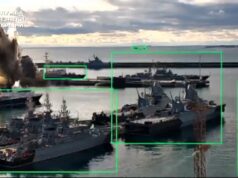
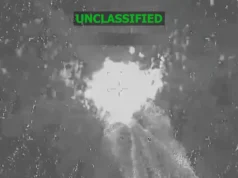
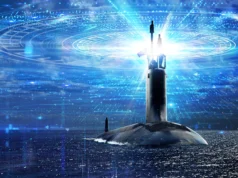
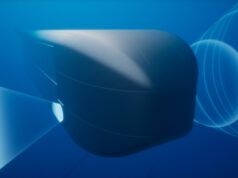
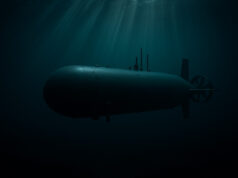

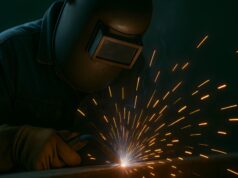

That’s most likely the Irish order for the CAPTAS 1, there’s a French article which has some images of the container for it (which is the first production model they’ve made) and the interview gives the order time and delivery which match up with what’s been announced by Dublin.
Looking forward to them getting installed.
Torpedos next.
Now, now, do you want to make the DOD cry.
I best temper my enthusiasm. 🙂
Speaking of enthusiasm, I see NavyLookout has cop to the story the Journal ran backin August about the NS wanting to pivot the MRV to a more combat capable design. But the NDP and the Budget avoided any mention of the NS while flagging the Army and AC so I’d say the DOD are trying hard to kill that idea off.
You know your DOD does not agree with military capabilities..it goes against its mission. A stable environment for economic growth.
Nah, the DOD’s mission is simply to try and eliminate the DF by any means necessary.
The ridiculous thing is we both know that is actually true.. a military supported by a civilian administration that actually dislikes it.
Question, could you use a towed array for surface ship detection, I am thinking in the just over the radar horizon so that would be about 35-50 miles?
The short answer is yes. Passive towed arrays generally detect anything in or on the ocean/sea if they are noisy enough and the noise source falls within its frequency range.
Fish, mammals (whales), seismic activity, oil drilling platforms and all manner of vessels. It’s all about recognising their acoustic signature.
Questions ought to be asked why the decision was made to sell off nearly all British defence industries, which were quite impressive once upon a time and rely pretty much solely on foreign innovation and development. The French did not go so far and today they reap the benefits.
The British company that builds these sonars is still a British company (Formally Ferranti, Thomson Marconi) . It was never owned by the British government so it was never sold off by anyone. It’s now owned by a French parent company after BAE sold it off.
BAE sold it off because there is a limited profit margin in the UK and Europe and they used the proceeds from this sale to purchase US businesses which have a much higher profit margin due to the pork barrel US politics and rampant corruption of that nation in the way it does military procurement.
The decision to sell BAE was made by one Margaret Thatcher in 1986 largely against the wishes and advice of her cabinet and the civil service.
That decision also lost us our stake in Airbus.
However I have been told that Margaret Thatcher is the best thing to ever happen to this country so it must have been the right decision.
What a load of inaccurate nonsense.
Another Russian bot
They can make any comments on content, they just sow hatred
he is correct. are you a UK bot spouting nonesense?
what utter nonesenese. Captas 4 is 100% french design and built. developped and tested at Theles Underwater at Gemenos site, south of France and built/assembled at Brest in France.
PS sonar 2087 is nothing more than a rebadged Captas 4.
completely deluded, but i guess whatever makes you sleep at night
That’s not strictly true, ST 2087 contains both Captas4 – LF active element and a Passive TA – UK element, which initself leverages lots of stuff from ST 2076. While it’s all from Thales, the passive stuff is from Thales UK, which is separate from the French company.
there is no Thales UK entity or any separate entity. it is just local offices in a foreign country fully owned and operated by Thales. Thales is a french company owned by France (26%) Dassault (26%) Thales employess (3%) and the rest is free floating stock at Euronext held by various financial institutions. Thales employees, France and Dassault have 70% voting rights.
The only difference between Sonar 2087 and Captas 4 is not hardware, it is the integration with a different CMS and proprietary accoustic signature libraries (the secret sauce) of the different navies..
All the tech is developed and designed in France as I previoulsy said. All sonar stuff for Thales is designed and developped by Thales Underwater Systems at Gemenos site in Sofia Antipolis, southern France. this is the center of excellence for all Thales sonar activity (hull mounted, towed, dipping, sonobuoys, etc…) which covers research and development, design and testing.
All that Thales UK does is installation, integration and maintenance work. they dont do R&D, design or actual sonar production.which is done in France. Even on your new Dreadnaught subs, those were subcontracted by BAE to Thales. So those flank arrays are developped from the same ones designed for french Suffren and dutch Orka class subs. only difference will be size since those arrays are scalable like radars. FYI those subs will also used licensed built S9G nuclear reactors from US Virginia Class subs by Rolls Royce rebranded to PWR3, or Trident missile and Mark 7 re-entry body. UK difference is only using its own stock of nuclead material based on US W93 warhead design. My point being rebranding seems to be a recurring pattern.
If the UK government was less mercantily driven on strategic defense issues, it would still have this local knowledge and industrial base. but this was all sold off decades ago. only choice now is purchase off the shelf or build an industrial base from scratch, much like recent decision to purchase F35A for nuclear mission. It is crazy that the UK is on the hook now for a dumb gravity nuclear bomb from the US! There was a time this was done by the UK (one of my favourite aircraft of all time the Vulcan bomber + Blue Steel nuclear missile), but alas times have changed.
Morning fella, thanks for the detailed reply, and will take your word for the way that corporate Thales is set up.
However, some of what you have alluded to with said sonars and hardware isn’t correct. Lots of the tech and software that drives the equipment is/was designed in the UK.
ST 2087 TA is UK kit, it was derived from ST 2076 TA which is a UK designed and built kit. Much of 2087 TA software is lifted from the 2076 system.
2076 is a federation of sub systems which form the sonar. Of the 7 sub systems only one is of French design – active intercept based on a Thompson designed piece of kit. The rest including bow, flank TA etc are UK designed evolving from earlier systems that UK SMs used. T boats had flank over a decade before the Suffren class were built.
The sonar going onto the Dreadnoughts and SSNA (2176 – well catchy I know) are currently under development here in the UK and not by Thales, who may well be responsible for the overall integration
of the systems.
The nuclear reactors that UK SMs use have always been based on US designs since we commissioned our first SSN – HMS Dreadnought back in the late 1960’s, where the reactors (Westinghouse) was entirely a US design.
Morning again mate, my error on part of what I posted, badly articulated by myself. Thales are involved in S2176 manufacture and further evolving design of the systems. For some reason I thought Ultra were involved apart from just 2150.
I think she made mistakes like they all do.
Personally, and overall, I don’t think we have had a PM of her calibre since looking at the utter shambles which has followed.
I’m too young to remember any before her as well, though many of those also seem mired in mayhem all the way back to Churchill.
Now there IS a leader I could get behind. I guess I have been born at the wrong time….
I did not agree with a lot of the stuff she did ( specifically the coal mining industry was short sighted ) but she was a leader that had a vision that she followed, it was the same with Blair.. these individuals had one thing in common a whole society Vision and conviction.. they did not say what they they though one group wanted to hear and pander to that… personally I think the issue with all our present politicians is that they simply pick a group with a shouty voice and say what that group wants.. starmer, Corbin, badinoch, farage.. each is only talking to a small group ( 20-30% of the population) the great leader shows a vision that the large majority can get behind… I don’t think social media is helping that either… to many messages from to many places that want our society to fracture.
I’m not even sure a churchhill could cut through the Broken messaging of the social media world.
I’m coming to the conclusion that AI driven social media algorithms and information push should be band and political advertising controlled on social media.. so only UK parties and political groups can place information on UK social media feeds… essentially foreign political feeds should be removed… I pretty much believe a lot of modern Uk political discourse is utterly controlled by external sources.. just consider the Isreal Hama war.. the entire destructive discourse it’s causing to our politics..and yet it’s an external war we have nothing to do with and have no control over.
Indeed I still shake to remember her claim to paraphrase ‘it’s madness to think Airbus could ever compete with Boeing’ with the derisive contempt evident in her voice. That attitude to British and European industry generally led to almost total commitment to service investment and neglect of great British Industrial if often badly run British companies. We are suffering for that especially now as the second Industrial Revolution is taking the World by the throat and we have too few companies capable of taking advantage while newer smaller more nimble companies are being snapped up from foreign competitors or even re-headquartering in California. The national capacity for serious economic growth were hindered by decisions made back them Arm is very much one of the successes that when analysed proves the rule and shows just how much potential we squandered. Our top two University World presence is being greatly squandered by the incapacity to exploit it nationally, making it greatly an expensive asset that fuels foreign mostly American technological and economic success. Not that you will get Trump or his acolytes to acknowledge it of course.
Let’s think positive. Thatcher’s focus on service industries has made us world leader in the nail parlours and dog grooming of our booming high streets. All we have to do is export them in the new trade deal with India. Simples.
And why ohh why is a CAPTAS variable depth sonar not standard on every RN escort.
Because we are “world leading” according to every talking head in the MoD, RN, and HMG, and do not need all that nonsense as the Russian submarine force has gone away.
Except, it never did.
There is also not enough money, despite HMG grandstanding that we will now spend so much more % than we did.
I agree. In the Cold War I believe ASW was the RN’s raison d’etre.
I do hate the word “ world leading” or world beating” .. first it’s arrogant beyond belief and second it’s used as an excuse for having sod all numbers. Finally people start to believe their own BS and hubris kicks in, and I firmly believe that the west has potential suffered a fatal dose of hubris developed from winning the Cold War then its experience in gulf war one… a symptom of this hubris is the concept of the end of history and last man as well as the idea of the short war. For some reason even the west’s catastrophic failures in the war on terror, it’s utter failure to prevent Russian expansionism and china becoming the dominant maritime and manufacture on the planet…
It staggers me and nowhere is this more true than the western view of china… a nation that now has about 55% of the worlds ship production, 30% of the worlds manufacturing capabilities, 70% of the worlds rare earth mining and 93% of the worlds rare earth refining. It has the navy with the most numbers of major surface combatants and submarines and the biggest merchant marine, it out produces the entire west in numbers of major surface combatants and submarines.. and yet china is somehow not an issue.. Napoleon thought Britain was a joke until it choked his empire on numbers of ships and goods produced..
What beats the world is numbers produced..world beating is and always has been a numbers game.. if the entire west utterly focused on naval and maritime production it’s still got the tec edge to dominate… but without that..